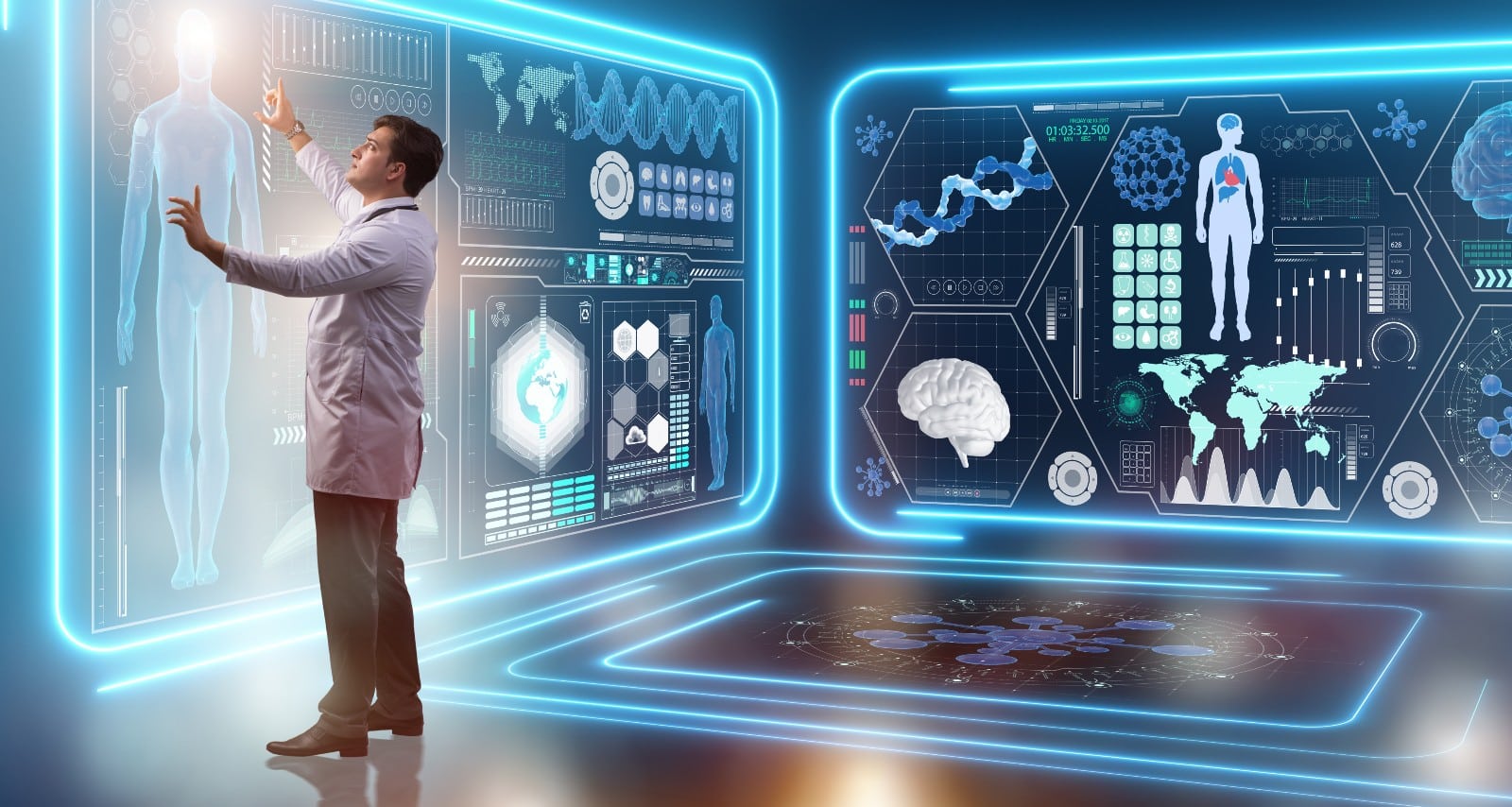In recent decades, there has been a significant advancement in medical diagnostics, especially following the recent surge in artificial intelligence (AI). AI has become a fundamental component in enhancing the accuracy and speed of disease detection. Physicians no longer rely solely on their clinical expertise and traditional tools; they can now leverage AI’s capabilities to analyze medical images and derive precise diagnoses swiftly. So, how does Artificial intelligence contribute to improving medical imaging? And what are its most prominent applications in this field?
How Does Artificial Intelligence Operate in Medical Imaging?
AI systems in medical imaging rely on deep learning techniques, where algorithms are trained on vast datasets of pre-classified medical images. These systems can identify subtle patterns within images that might be imperceptible even to trained human eyes.
The operation of AI in medical diagnostics involves three primary stages:
Data Collection: Amassing large volumes of radiological images and accurate diagnostic data from previous patients.
Training: Teaching deep neural networks to recognize various pathological indicators.
Analysis: Accurately examining new images and providing a diagnosis or alerting the physician to potential issues.

The Role of Artificial intelligence in medical imaging
Medical imaging stands as one of the most crucial diagnostic tools, with physicians depending on techniques like X-rays, Magnetic Resonance Imaging (MRI), and Computed Tomography (CT) scans. With AI’s evolution, it’s now possible to analyze these medical images using machine learning algorithms and deep neural networks.
Artificial intelligence in this domain is characterized by its ability to:
- Analyze images with exceptional precision, aiding in the early detection of tumors and chronic diseases such as cancer and heart conditions.
- Reduce medical errors, enhancing diagnostic accuracy and minimizing the chances of misdiagnosis.
welt.de - Accelerate medical procedures, as AI can examine thousands of images in a fraction of the time it would take using traditional methods.
Applications of Artificial intelligence in Medical Imaging
AI is utilized in a wide array of applications within medical imaging, revolutionizing the diagnostic landscape. Notable applications include:
Early Cancer Detection: AI enhances the identification of cancerous tumors, particularly in breast and lung cancers. Algorithms analyze mammograms and CT scans of the lungs, facilitating the discovery of tumors in their initial stages.
Cardiovascular Disease Diagnosis: Echocardiography is a fundamental tool for diagnosing heart diseases. AI assists in analyzing cardiac images, measuring blood flow, and detecting valve disorders with high precision.
X-ray Image Analysis: AI is employed to interpret X-ray images, identifying conditions like pneumonia, osteoporosis, and bone fractures. During the COVID-19 pandemic, it was extensively used to diagnose virus-induced pneumonia.
MRI and CT Imaging: AI systems analyze MRI and CT images to detect neurological diseases such as Alzheimer’s and strokes, enabling faster assessment of brain changes compared to traditional methods.
Ophthalmology and Retinal Disease Diagnosis: AI is a vital tool in diagnosing retinal conditions like diabetic retinopathy, glaucoma, and macular degeneration. It analyzes retinal images to detect potential issues early, aiding in vision preservation.

Challenges Facing Artificial intelligence in Medical Diagnostics
Despite the significant progress AI has made in medical imaging, several challenges persist:
Need for High-Quality, Extensive Data: AI systems require large, diverse datasets for effective training, which can be limited due to legal constraints and medical data-sharing ethics.
Physician Acceptance and Integration with Medical Systems: Some physicians remain hesitant to fully adopt AI, posing challenges to its acceptance and integration.
Potential Data Bias: Training systems on unbalanced datasets can lead to diagnostic errors, especially when dealing with diverse populations.
The future is trending towards increased integration of AI in healthcare, with expectations of improved diagnostic accuracy through the development of deep learning algorithms. This includes integrating AI with surgical robots to reduce errors, developing predictive techniques for early disease detection, and utilizing portable technologies to analyze medical images via smart devices.

AI has become a cornerstone in the revolution of medical diagnostics, contributing to improved analysis accuracy, error reduction, and faster diagnoses. Despite the challenges it faces, ongoing advancements in AI technologies promise a more precise and efficient future in medicine. Embracing these technologies will enhance healthcare quality, offering greater opportunities to save patients’ lives and improve diagnostic and treatment experiences.
Having explored how Artificial intelligence is revolutionizing medical diagnostics, we invite you to be part of this remarkable development. If you’re seeking to gain in-depth knowledge and practical skills in this vital field, the HSI Center for Healthcare Training & Consultation offers you a golden opportunity through specialized biomedical engineering courses. These courses are designed to equip you with the latest technologies and knowledge necessary to keep pace with rapid advancements in AI and medical imaging. Join us today, invest in your professional future, and become a pioneer in utilizing AI to save patients’ lives and enhance healthcare quality.